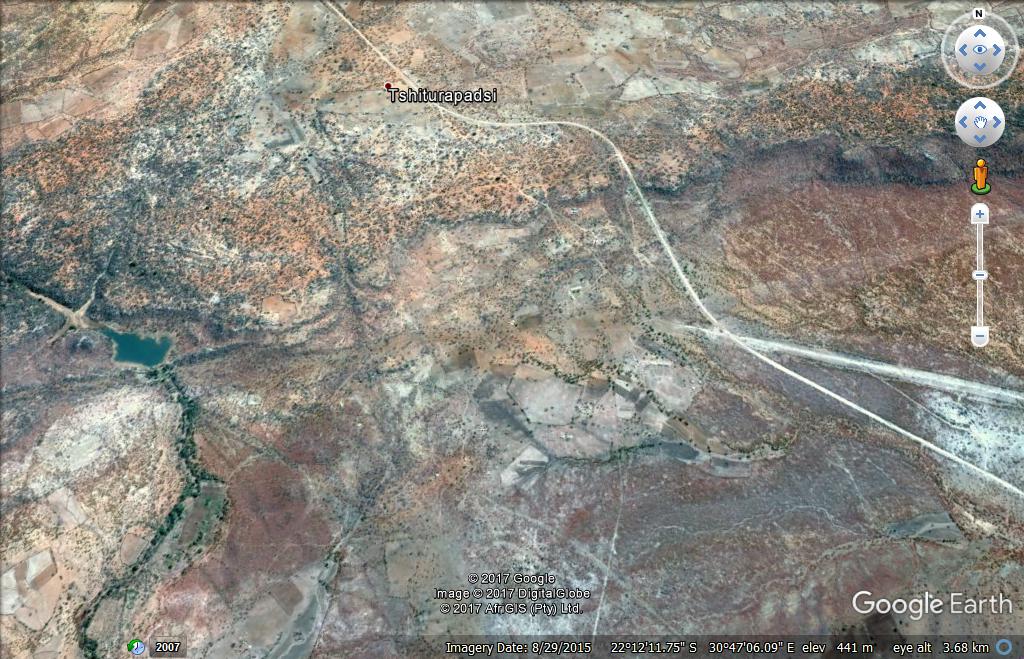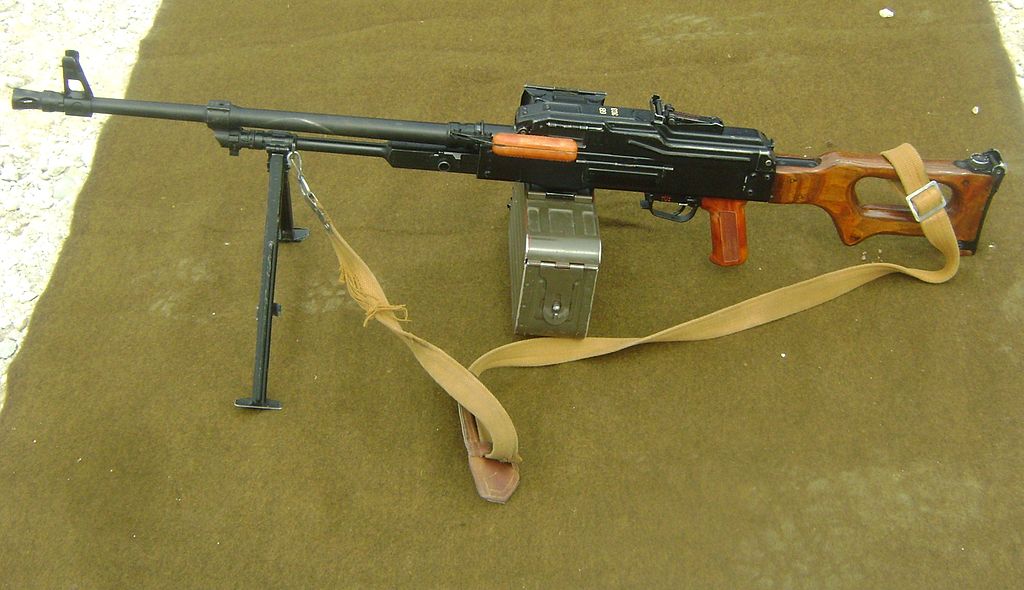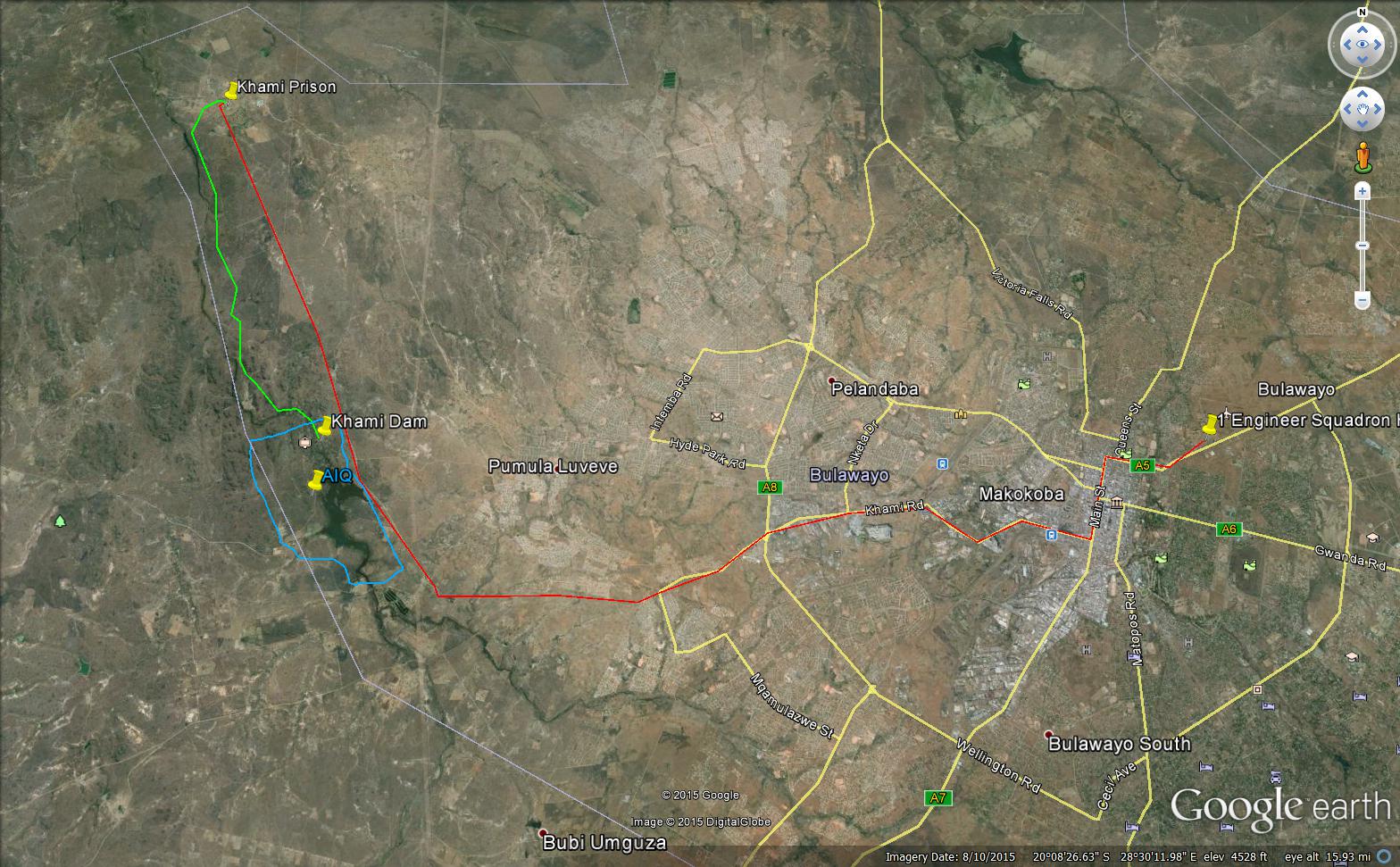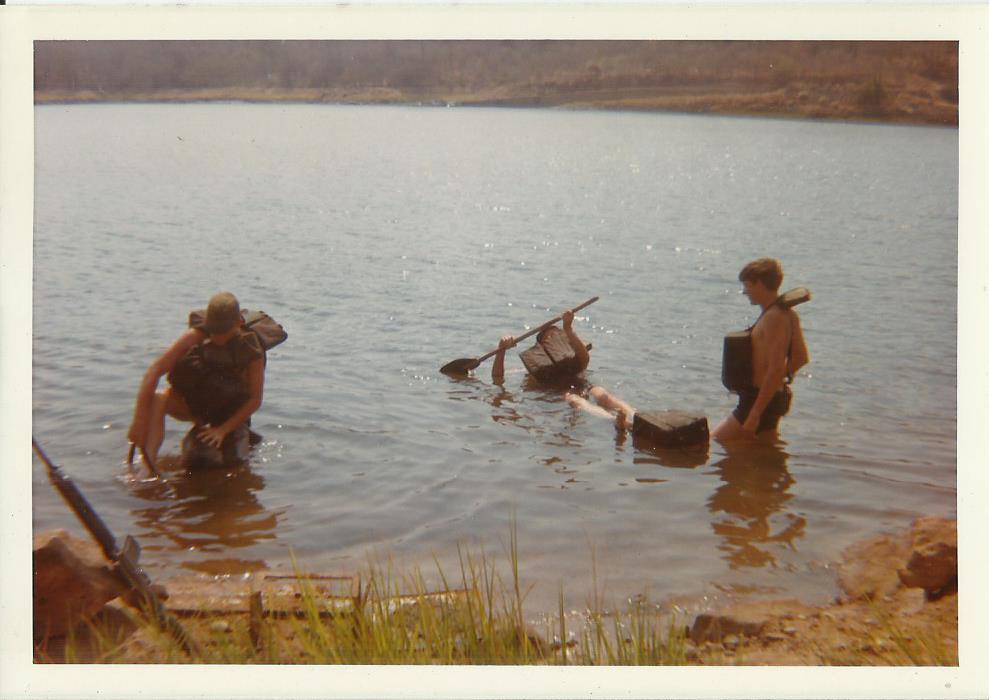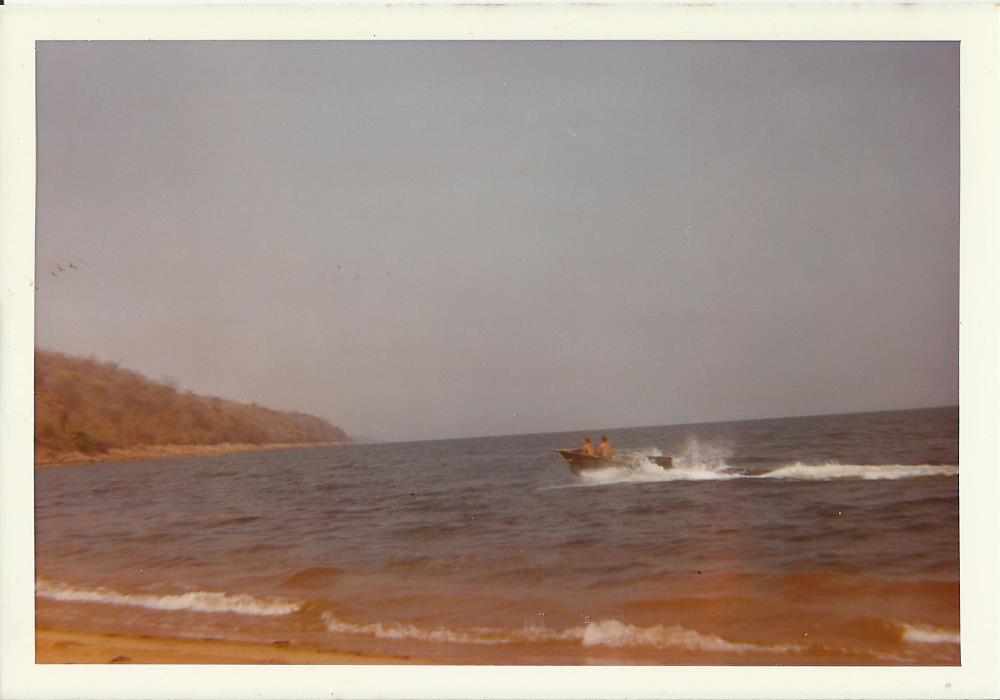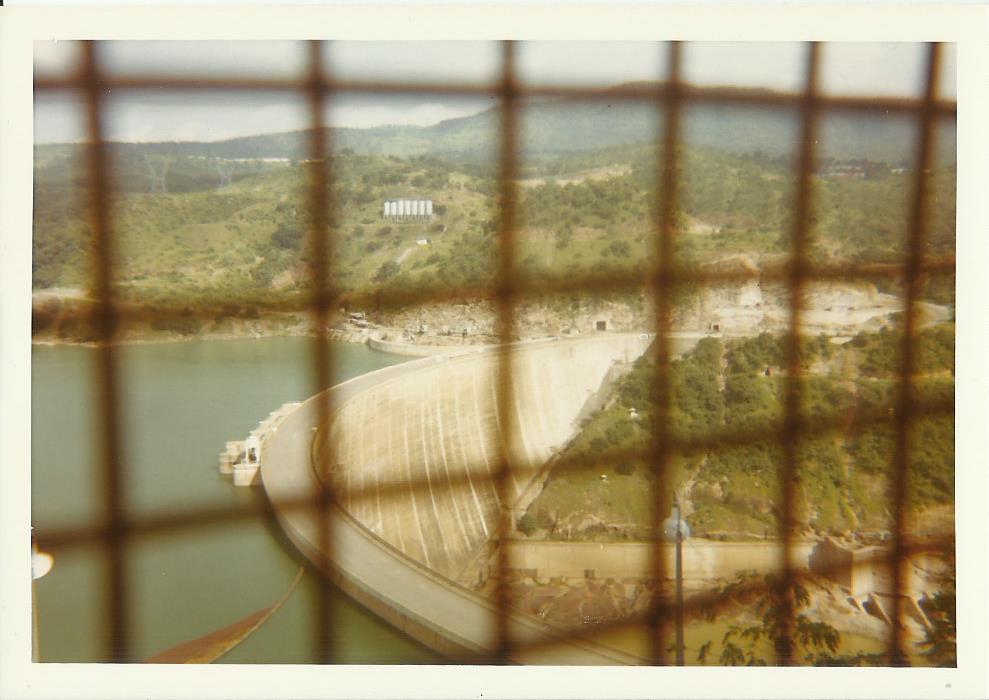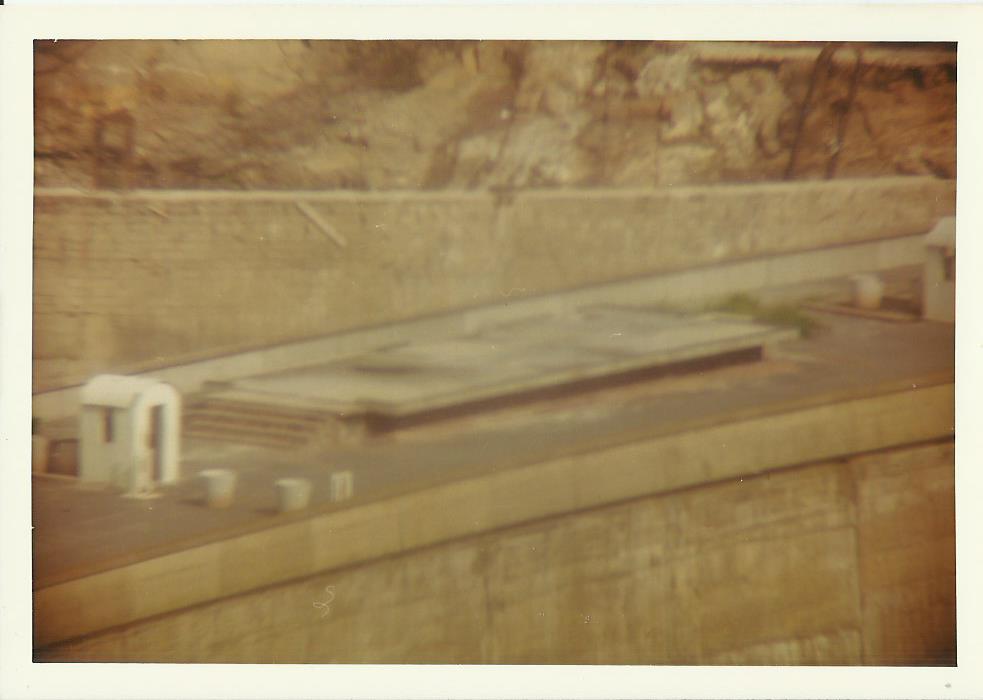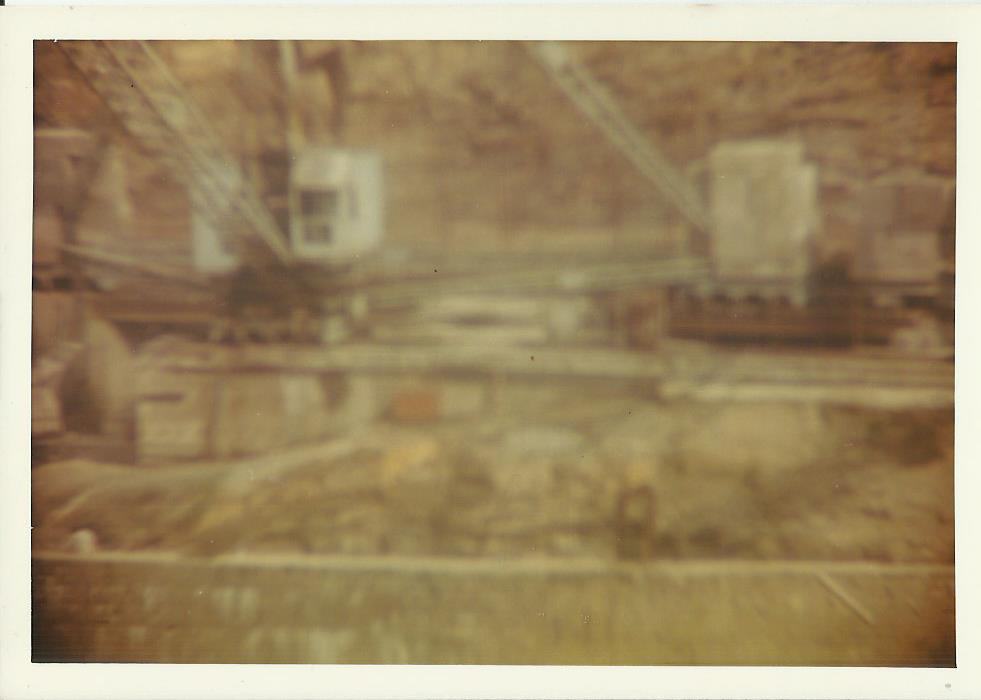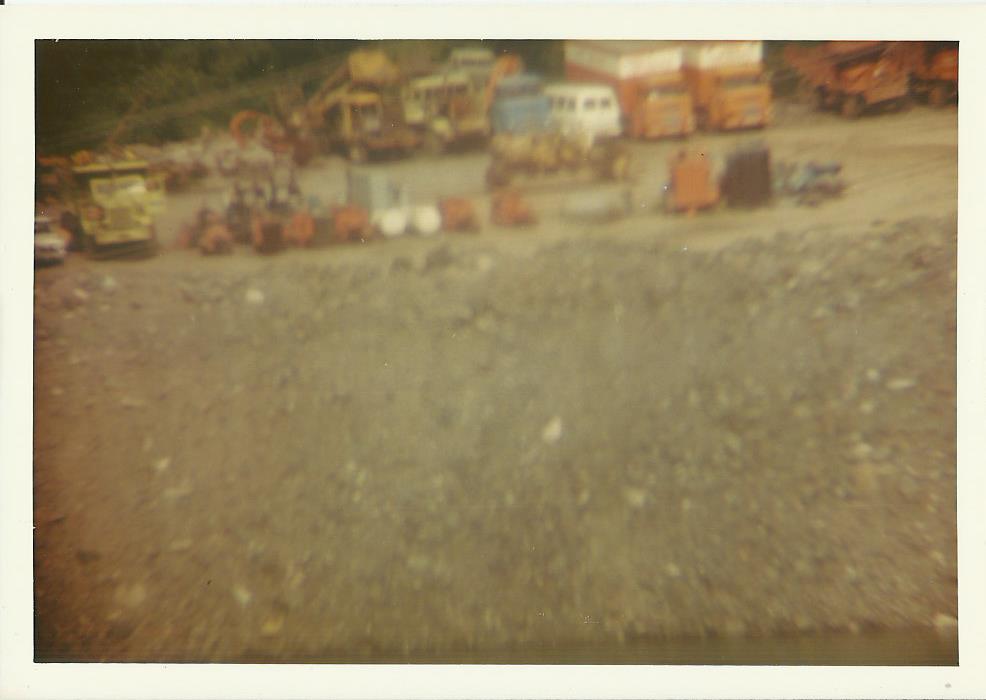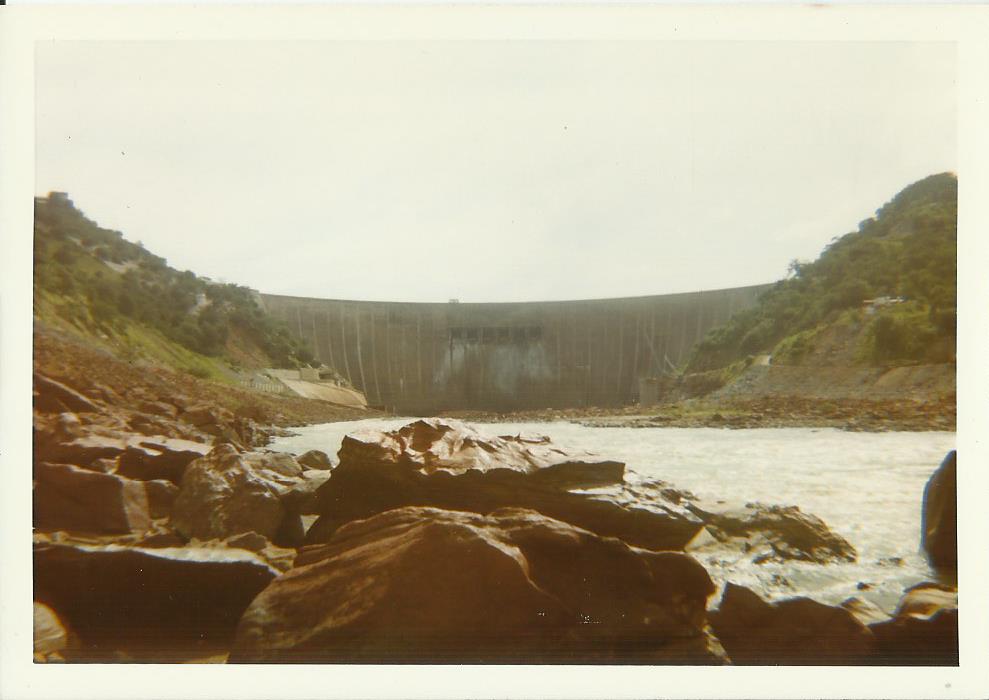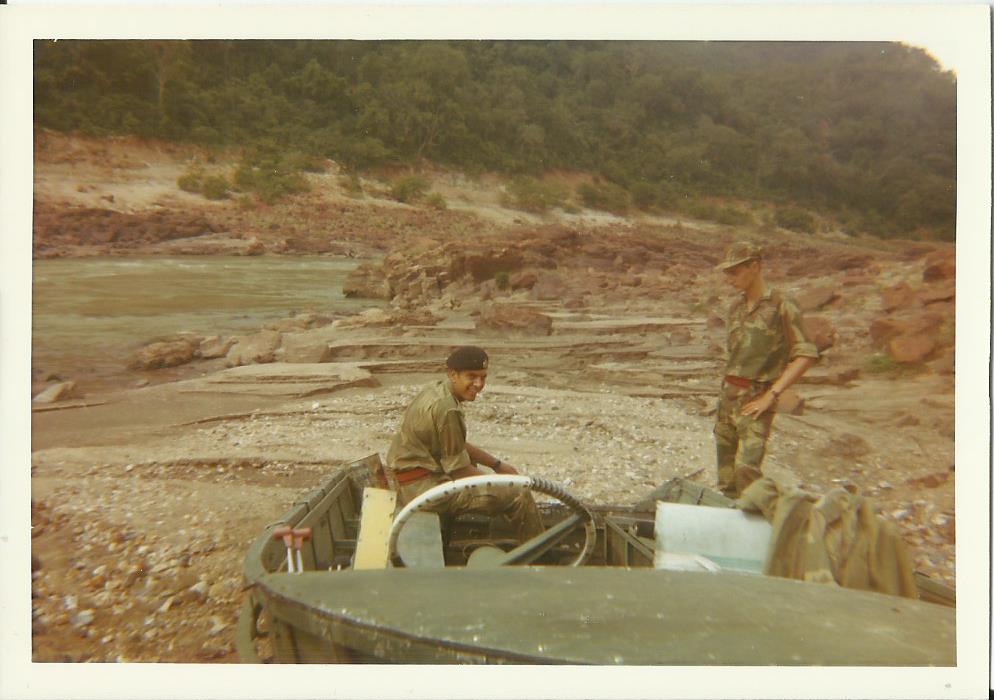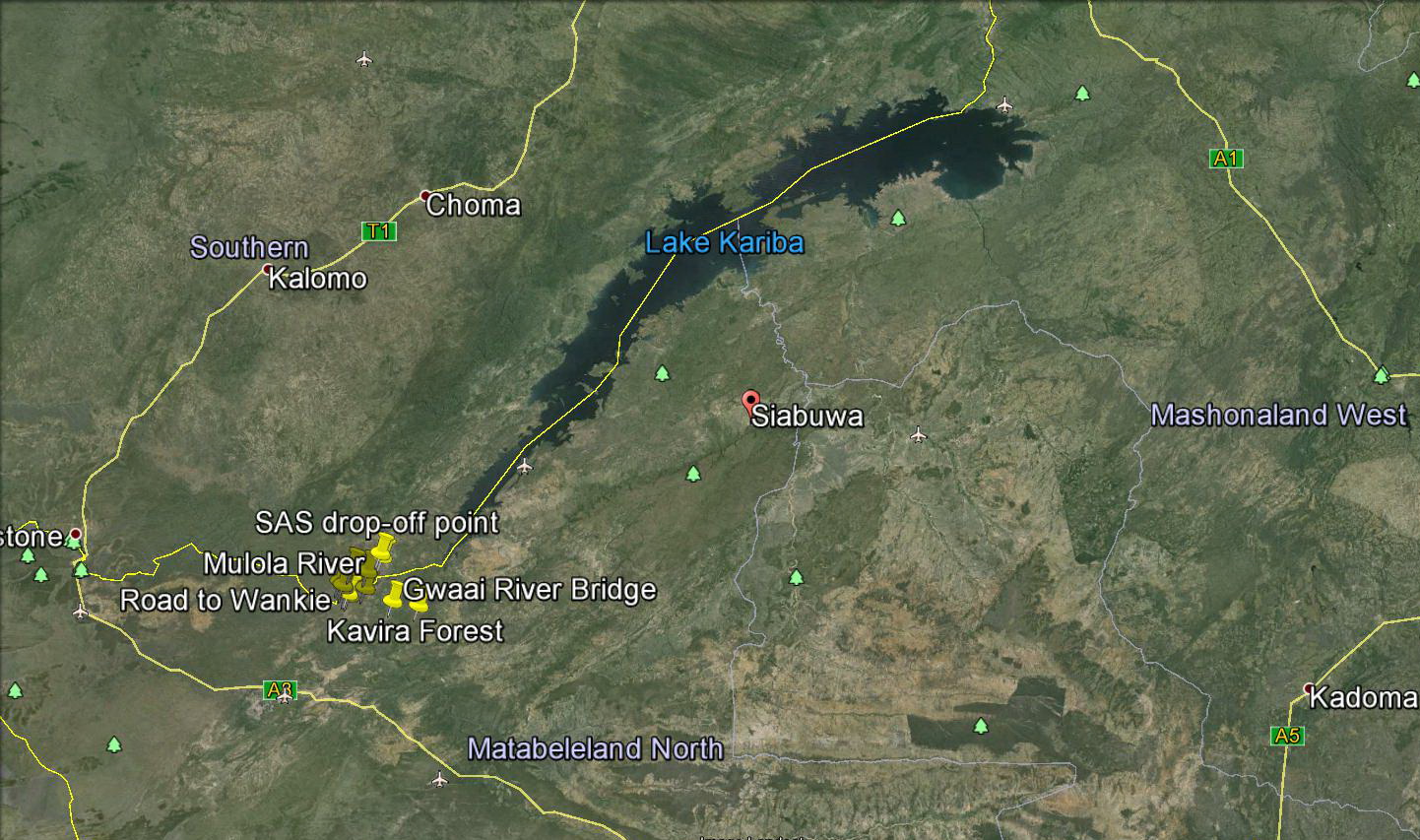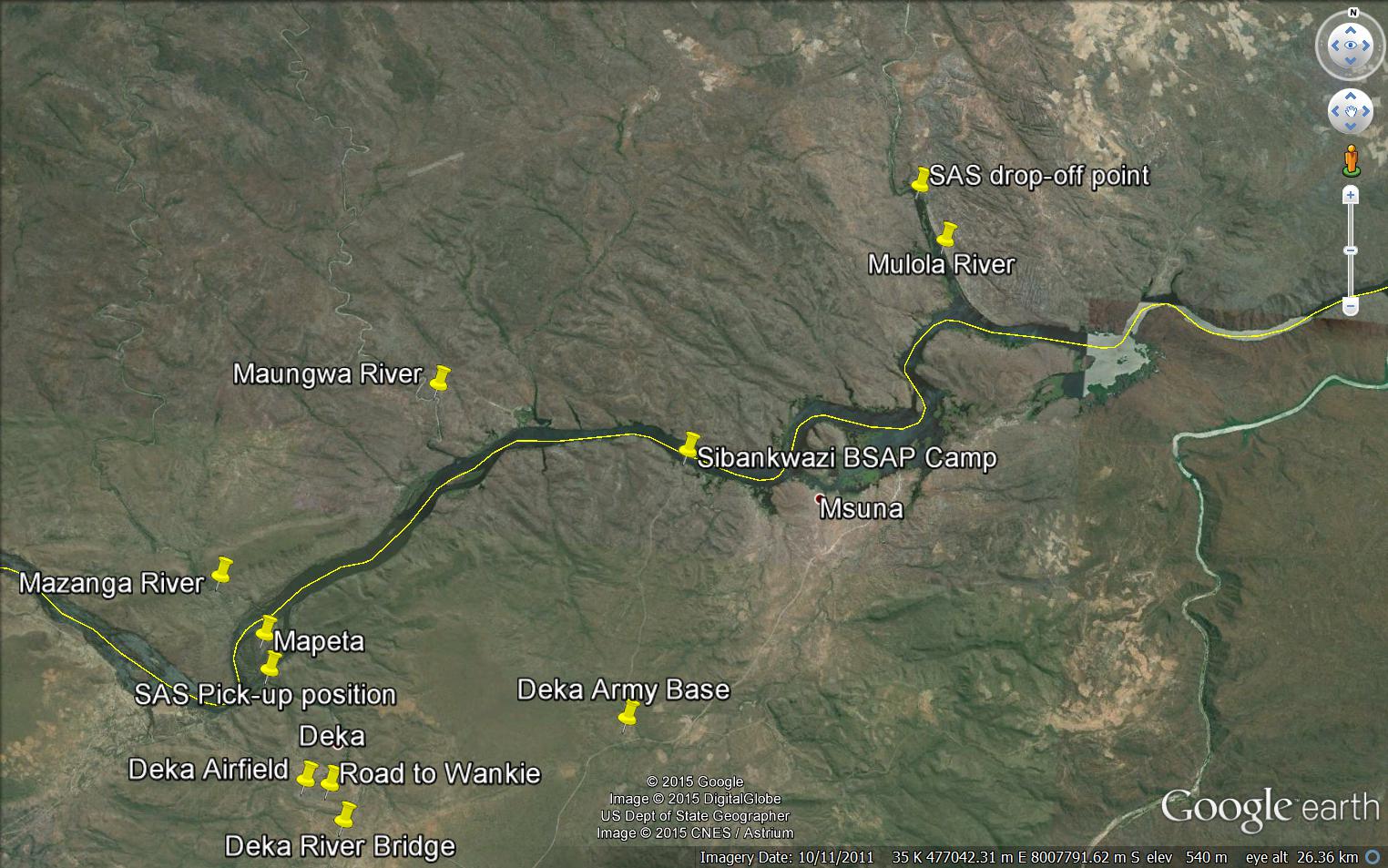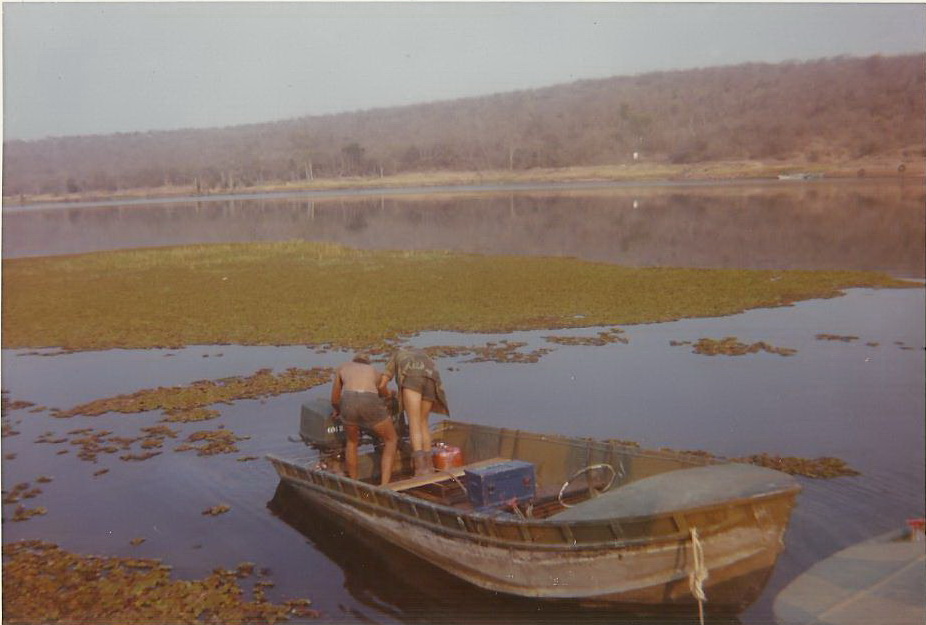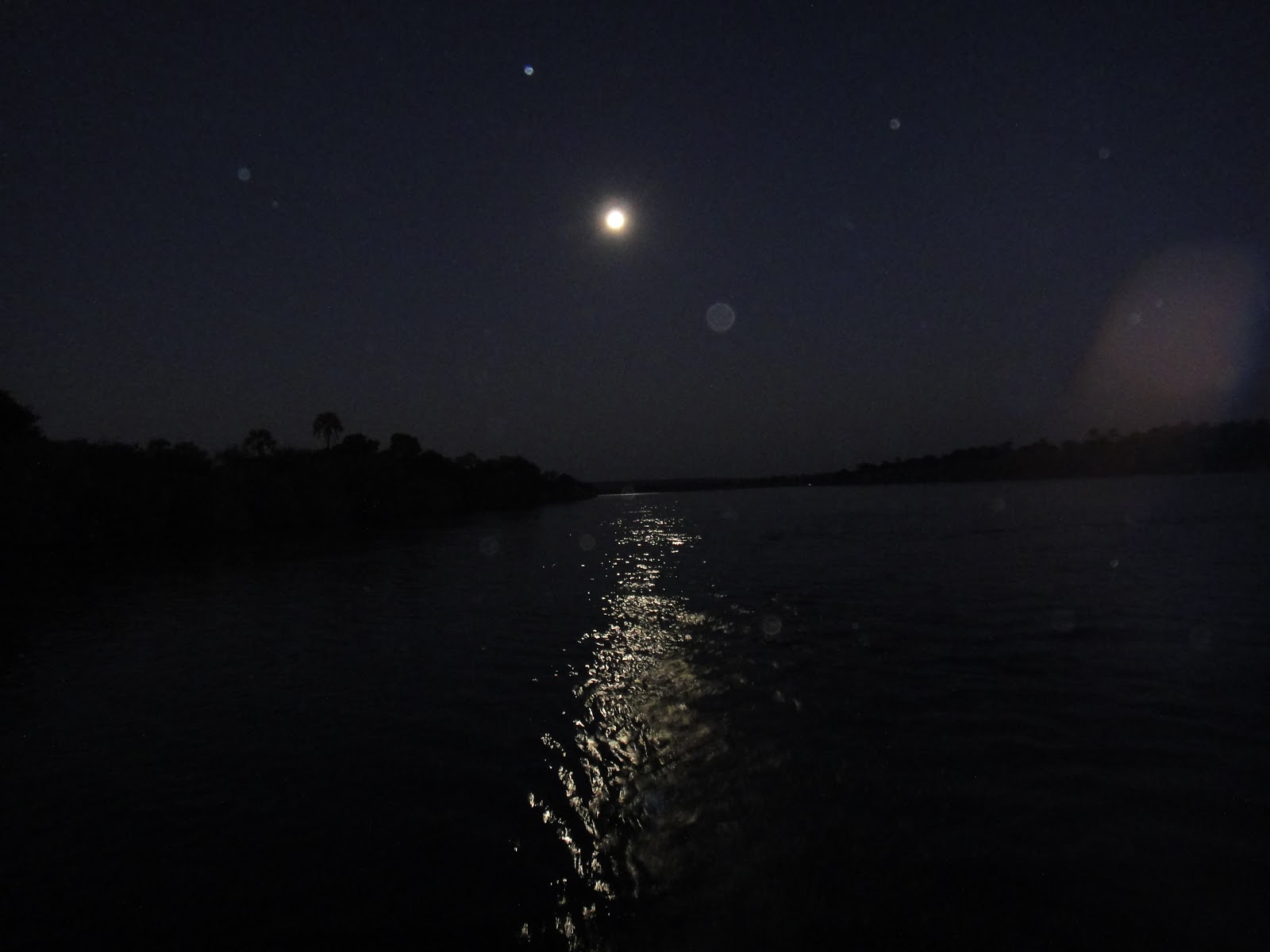Cunning Contrivances: Booby Traps (Part 1)
January 2, 2023
The definition of a Booby-Trap according to the Rhodesian Corps of Engineers (RhE) training pamphlet was as follows:
“A booby trap is a cunning contrivance, usually of an explosive and lethal nature, designed to catch the unwary enemy; a savage practical joke. It is aimed directly at the reduction of morale and mobility, both of which are vitally important to success in war.“.
In this post I would like to recall two occasions where I was tasked by my higher HQ to lay Booby-Traps. These operations were to take place in the Operation Tangent area and were to be sighted in such a way that terrorists would be well into the kill-zone before the traps were initiated, meaning that we were going for maximum gook casualties. Concealment of the entire set-up was therefore of critical importance, and this includes clandestine insertion of the Booby-Trap team, as we knew that there were eyes and ears everywhere in the bush. We therefore had to apply counter surveillance techniques from insertion to extraction as it is pointless to lay a Booby-Trap that can be seen, or the laying team are observed moving into the target area.
Without going into too much detail, Booby-Traps can be initiated (set-off) by a number of actions, the most popular at the time being the application of pressure, the release of pressure, pull, pull (or tension) release, or the application of some form of Delay. There are many other ways that Booby-Traps can be initiated but I am not going to cover these here. We had specially manufactured devices known as switches, available to us, however for the specific tasks that I was to lead on we would be using Pressure switches only. In other words the required action for success was for someone or something to stand on the pressure switch for the Booby-Trap to detonate. Please note that I used the term “someone or something” as these devices cannot tell friend from foe and would therefore activate the trap regardless of who or what applied the pressure. Sadly animals and friendly forces have been collateral damage to these devices on a number of occasions causing death or injury. The following illustrations show the abovementioned methods in simple to understand detail:

Looking at the previous paragraphs, my readers will appreciate that there are a number of fundamental pre-requisites for a successful Booby-Trap result. One does not simply pick a spot on a map and Booby-Trap it and there are a number of basic principles that we observed when sighting and laying Booby-Traps, and these are as follows:
- Concealment: The charges and mechanisms must be concealed or made to resemble some harmless object. The surroundings should be disturbed as little as possible and all signs of preparation should be concealed or removed.
- Constricted Localities: The more constricted the site in which a trap is laid the more chance there is of its being sprung and the greater the difficulty of detection and clearance. Any form of defile is therefore a suitable site for boobytraps.
- Concentration of Traps: Traps should be laid, whenever possible, in considerable concentrations to reduce the chances of finding them all without springing some. Dummies should be used freely.
- Double bluff: An obvious trap may be used to mask a well concealed trap near by.
- Inconvenience: Traps may be operated by the removal of obstacles such as road blocks and demolitions, or of furniture or litter in dug-outs or buildings, particularly if these are suitable for headquarters.
- Curiosity: The handling of souvenirs, pictures, food and drink containers, musical instruments, weapons, etc, may operate a trap.
- Everyday operations: Traps may be operated by opening or closing doors or windows, using telephones or electric light switches etc.
- Attraction: Delay-action or incendiary bombs may attract personnel to a booby trapped site.
- Alternative methods of firing: A trap may be provided with two or more methods of firing.
- Variety: As many different types as possible should be employed in any one locality.
Before continuing I would like to be clear on what I was expected to achieve on both missions and you will note that this ties in closely with the foregoing paragraphs:
- Inflict maximum casualties on the enemy.
- Use Pressure as the initiating action.
- Use of the following Principles – Concealment, Constricted Localities, Concentration of Traps, Alternative methods of firing and Variety.
- Covert infiltration to laying site
- Operational Security (Opsec)
A brief description of the two missions are as follows:
Mission 1
- Operational Area: Tangent
- Environment: Forest
- Type of Booby-Trap: Multi-device, pressure operated
- Concealment method: Existing vegetation
- Explosives to be used: Date expired Air Force and Army ordnance
- Insertion: Vehicle and night-march
Mission 2
- Operational Area: Tangent
- Environment: Existing dirt road
- Type of Booby-Trap: Multi-device, pressure operated
- Concealment method: Existing soil on dirt road
- Explosives to be used: Anti-personnel and anti-vehicle mines
- Insertion: Boat and night-march
In the next post I will describe in detail Mission 1 and Mission 2.
Rhodesian Corps of Engineers (RhE) Poppy Pin
October 1, 2016
 Brothers, Sisters and Friends of Fatfox9 and the RhE. I am having 100 of these poppy pins made up with the RhE Cap Badge superimposed. Anyone interested in having one before 11th November please order ONLY via fatfox9@gmail.com. Prices are as follows: UK via Royal Mail £3.20. RSA via Royal Mail ZAR70.00. When ordering please include your full shipping address. Ideally if someone in SA would take a bulk order we will all save on international shipping costs. Time is moving on so please place your orders as soon as possible to avoid disappointment.
Brothers, Sisters and Friends of Fatfox9 and the RhE. I am having 100 of these poppy pins made up with the RhE Cap Badge superimposed. Anyone interested in having one before 11th November please order ONLY via fatfox9@gmail.com. Prices are as follows: UK via Royal Mail £3.20. RSA via Royal Mail ZAR70.00. When ordering please include your full shipping address. Ideally if someone in SA would take a bulk order we will all save on international shipping costs. Time is moving on so please place your orders as soon as possible to avoid disappointment.
On The Boats And Sundry Combat Engineer Duty: A Personal Account Of Rhodesian Sapper Life
May 2, 2015
Another great contribution by Basil Preston to my blog. Many thanks Basil.
Reading through this account, those of you that have been in the bush and taken part on ops will really get the feeling of having had similar experiences. I also worked with Don Price while at 1 Indep in Wankie and always found him to be a professional soldier although he did call me a “dude” one day while we doing stopper group ops for fire-force. Good times and I can really relate to Basils input which follows:
Boats at Binga and Sundry Combat Engineer’s duty 1978/79 (thereabouts)
We were doing a camp with 2RR?, at Binga and Major Don Price was the officer-in-charge. The Engineers were Stan Brazer, Graham Malone and myself and we were operating the boat in between doing mine-road clearance etc. We were to have a Pookie with us, but unfortunately it had been damaged in a mine blast before we arrived.
Major Don Price is well-known for his bush savvy and his company had many kills to their credit. But it was not always in their favour. Major Price was very strict; in that he would not allow any of his guys to catch a lift when their stint on patrol in the bush was complete. However, a stick of four guys had just completed their patrol and had stopped over at the police camp at Siabuwa, to wait for their pick up. (Siabuwa, is a small relatively unknown area and one would only know about it if one travelled to Karoi from Binga through the bush, along the southern edges of Kariba driving a 4×4. Nnear Binga, Matabeleland North, its geographical coordinates are 17° 28′ 0″ South, 28° 3′ 0″ East ). And the police camp was on top of a gomo.
(Inserted by Mark Craig: Below is a map showing Siyabuwa…….those following the blog will see how close it is to my area of boat operations).
Instead of the stick waiting for their pick-up at the pre-arranged position, they hitched a ride with the police in a landrover. However, the terrs had laid a mine in the tracks. And just before the police track entered the main dirt road, they hit the mine. Richard (?) Kashula and one/two other/s sitting in the back of the landy, where there is no mine protection were killed. John Sholts lost a leg. The one chap sitting in front of the landy plus the cop had minor injuries. The other guy was badly burnt from a white phosphorous grenade which had gone off in his back-pack at the time of the explosion. Kashula was an up and coming Rhodesian cricketer. My recollection of this is a bit hazy as far as the names go. But it was a sad day indeed for all of us.
We were all given a lambasting as to why the Major had rules and now we could all see what happens when ignored. We all felt shit….But then we all celebrated with the Major the good things they had done.
But life goes on. An Air Force chap, who was based at Binga at the same time had his private boat moored at the back harbour. Stan convinced him to take us fishing, which he gladly did. We tied the boat to a tree overhanging the water’s edge. This was at the mouth/entrance from the lake to the back harbour, as this guy said you catch “monsters” here. All we had to do was let the line out for a while, straight down; no casting, and then jiggle the line up and down. Stan had a strike which broke the rod where the reel is connected, but after recovering the line, all the tackle was gone. We all became very excited now, hoping to catch a “monster”.
But this was not to be. We had all been told to be on the look out for a Romanian chap, who supposedly ferried terrs across Kariba, and also that he had a 20mm cannon on his boat. Also, the odd police boat had been hijacked from its moorings and taken to the Zambian side from the front harbour. Hence why we now used the back harbour. {This was about the time the Janet was being used as the mother ship, with two strike boats operating from her. She had radar etc and were hoping to catch up with the Romanian. An Engineer, surname Tailor did his whole camp with one contact lens as the other had been blown out by the wind during a boat patrol.}
All of a sudden, bullets were zapping over our heads. We all shat ourselves, as we thought that the Romanian had seen us and was giving us a go. But the bullets stopped; then resumed again, and again. But the bullets were cracking rather high above us. Then we saw what was going on. The cops had floated a 44 gallon drum, and were doing “drive-by” firing practice at the drum, and the bullets were ricocheted off the water and ending up above us. We departed in a hurry and returned to the back harbour and safety (by road to the back harbour from Binga is about 15ks, and from the front harbour to the back harbour by boat, was about 30ks.)
We became rather friendly with the Air Force chap, based at Binga at the time, who loaned us his boat whenever we wanted a bit of R and R. But this soon came to a stop. We were going out on another R and R trip. And on arriving at the back harbour, we could not see the boat. But on closer inspection, we noticed the tie-up rope, and it was taught. We went closer and saw that it was still attached to the boat. It had sunk by itself. We were lost for any logical reason. Perhaps one of the cop’s bullets had done it an injury, but we will never know.
On another short patrol, this time in our Hercules, Graham Malone and I explored a part of the back harbour, which was off the beaten track so to speak (the army has given us plenty of opportunities of seeing “virgin” Rhodesia, which under normal circumstances one would never ever travel to and fishing sprees where no one has fished in years due to the terr activities. So this may sound like bullshit, but it is not). We were told that the tiger fish in the back harbour were a sub-species of the lake tiger; and were a smaller version and had a more snub head which was blueish in colour. But were just as sporty as the river tiger [the lake tiger is shorter and its girth bigger; is sluggish and basically only jumps once to rid itself of the hook.] (the record for a tiger in the lake is 42 lbs caught in a net, this is old information….1972…. and the river tiger is longer and more streamlined as it has to swim against currents etc and gives a better fight). We were able to confirm this sub species as we caught a few.
However, on a more humorous note, we were speeding along, and as we were rounding a bend, we surprised a hippo, which normally are not on land during day time, but this area was human-free and I doubt whether the hippo had ever seen a boat before. Not only did we surprise this huge animal, it put the shits up us, as we had not seen it. But all of a sudden, we heard this thrashing sound of something hitting water at speed. When we saw it, it was a mass of moving, terrified animal pushing water either side of itself, similar to when a Kariba sluice gate is open full. And it was heading directly towards us, well that’s what we thought. It was charging along the shortest route to get back into the water and safety. We were out of there in no time. It is just a pity that we did not have a camera with us. But I doubt whether any of us could have taken a picture, as things were happening at a terrific speed.
One night Don Price sent us on a night ambush. We were to ambush the bottle store (Tolotsho Bottle Store, I think, as intel from BSAP Special Branch had heard that the terrs were going to have a beer drink) about 30ks from Binga, back on the main road towards Kamativi. It was full moon and we were being driven by Louis Ribero. A whizz at de-governing the TCVs. As usual, the old Bedfords always back-fired, but Louis could make this happen as if it was a natural noise of the truck; so just after passing where we were to have the ambush, he induced the Bedford to back-fire, and slowed down so that we could hop off without killing ourselves, and once we were all off, the vehicle suddenly recovered and he continued for a couple of k’s so that the terrs would not know that we had hopped off. Then he turned and set off back to Binga and a cold chibulie.
About 15 minutes after being dropped off, we heard this tremendous explosion. Things always sound much louder at night. We all knew that Louis had hit a mine. The terrs (obviously on their way to the beer drink) had put one down just after we had passed them. They could have ambushed us. Anyway, we were then told to hump it back and ambush the truck. Also, a Provost was being sent from Wankie to drop a flare in order for us to have a look-see around the truck etc.
But, the timing was out. Ribero had been going so fast that the Major had incorrectly estimated the time it would take us to get into position and be able to use the light from the flare. Louis had told the Major that the old Bedford could not speed. Anyway, the plane flew over head, dropped his flare and we were still miles away.
Our adrenaline was pumping and as one knows, induces plenty of pissing time, and I just stepped off the main road onto the verge; we did not stop, so when I rejoined the line, a Rifleman nearly took me out as he had not seen me step aside. I learnt another lesson that night. Make sure everyone knows where every one is at all times.
Anyway, we eventually arrived at the RL, we could see enough to confirm that Louis was speeding; fortunately for him, it was on a straight and it was a right-back wheel detonation and no injuries, other than Louis’s pride. His truck was airborne for about 50 metres before the back axle touched down again. Another RL from the camp had already fetched Louis and his escorts before we arrived back at the injured old RL (the terrs had learnt too that when an RL back-fires that we were setting up something and the vehicle had to return, they were not all stupid as one thought and used this opportunity to plant a surprise, this was done on many occasions to other chaps).
We could not see all that good, but good enough to choose a spot for our ambush and then crept into our fart-sacks and did guard, by touching the guy next to you when your stint was over. However, my fear of Kariba spiders was with me again. After I crept into my sleeping bag, and just above my head, I saw this huge spider. The type that eats innocent Sappers. I did not move much for fear that this spider would make me his nightly snack.
I did eventually fall asleep, and when my eyes opened, the first thing I did was to see where the spider was (it’s funny how the mind works; bushes start moving, all shapes become the enemy, etc.). Well, I had been stressed for nothing, as the huge spider was in fact the head of a grass seed, the size of a semi-closed hand. I was thankful that I had not shared this with anyone that night, as I would not have heard the end of it. But perhaps they also had their own spiders to contend with.
And Louis Ribero continued to drive like Speedy Gonsalas. And survived, I hope, as he was a pleasant character.
Sapper B.R.Preston (RhE); 72860
Please also have a look at my website dedicated to Rhodesian and South African Military Engineers. Please join us on the forums by using the following link:
http://www.sasappers.net/forum/index.php
Copyright
© Mark Richard Craig and Fatfox9’s Blog, 2009-2015. Unauthorised use and/or duplication of this material without express and written permission from this blog’s author and/or owner is strictly prohibited.
On The Boats……Up The Creek With The SAS (Part 4: Also known as Eight Men In A Leaky Boat)
March 28, 2015
ZAMBEZI RIVER DOWNRIVER FROM MAPETA ISLAND: EN-ROUTE TO THE SAS DROP-OFF POINT
The boat was heavy and she laboured through the water and it felt as if invisible claws were trying to hold her back…..not wanting to let us go. An omen perhaps?
Tony was doing the best he could but try as he might he could not get us up on the plane even though we had moved as much kit to the back of the boat as possible to lift the bows. This in turn caused the stern to dip dangerously low towards the waterline and it was a little unsettling to say the least. Port and starboard trim was good though and we remained straight and level, not tilted to one side. We settled on a half-throttle pace, and taking our direction from the SAS Operator on the front bench the twin Evinrudes burbled us slowly back down the river.
We travelled within Rhodesian territory for quite some time, and for youngsters that had no previous experience of this type of operation this took away some of the tension of what may be ahead of us. It was somehow reassuring to know Rhodesia, our safe haven, was not too far away if the shit hit the fan. The SAS Operators were as always the ultimate professionals and I was proud to be working with them. They instilled a sense of security. You knew instinctively that if things turned nasty they would know exactly what to do. They were good men.
We had passed the Maungwa River mouth to the north, and then our second home the British South Africa Police (BSAP) camp at Sibankwazi. Msuna Mouth glided by in the darkness to our right and I craved for the ice-cold beers and battered barbel snacks I had consumed there on many a visit to the friendly owners of the fishing resort. It was easy to let ones mind roam and that was dangerous. We meandered on down the river, passing two large islands……both pitch-black and foreboding.
I was jerked back to the present, my mind having begun to wander off. Tony had swung us hard a-port and I lost my balance slightly while at the same time keeping a beady eye on the bow wave. The SAS man at the front had given a silent direction change to Tony. In a few minutes we would be crossing the invisible line that marked the international border between Rhodesia and Zambia. It was an eerie feeling, crossing into another country without permission, no passports, no questions. I began to warm to the idea of doing something I had never done before, and indeed I had crossed that point where fear no longer exists. You were committed to the mission, personal weakness or doubts could no longer be a consideration and there was no turning back. On every high-risk mission I have taken part in there was always a short period when I was afraid, sometimes very afraid. With me this is usually at the start and moving into the advance-to contact-phase, but once time crosses that indefinable moment that I cannot explain, a wonderful warm feeling washes over me….a feeling of being in control of my own emotions and destiny. The dye had been cast and there was no return.
It was that time for me now……approaching enemy shores on a dark and lonely river.
(Reservoir by StrongSteve)
The atmosphere on the boat had changed in a very subtle way. No one said anything but you could feel it. The SAS men began to check small details on their kit. Weapons were moved into more convenient positions, the smell of gun-oil permeating the air, masculine and comforting. Webbing was tightened over shoulders, shifting the weight of equipment onto the hips. Legs were stretched in the cramped confines of the boat.
A small red light came on as one of the Operators checked a plastic covered map with a small torch…….looking up at me he nodded his head, managing a white-toothed smile that shone through the darkness of the night and his camouflage cream. We were now well into Zambian waters and heading towards the Mulola River, one of the biggest rivers that emptied from that country into the Zambezi. We could see its gaping mouth ahead of us……a huge dark maw of emptiness seemingly waiting to swallow its victim. As we exited the Zambezi and entered the Mulola it became claustrophobic…….or so it seemed to me. After having vast expanses of water between the boat and land previously, we were now being enclosed by the high, almost invisible banks of the Mulola. The feeling of vulnerability returned to me, this would be the perfect place for an ambush and a mans imagination can run amok. This is good in some ways as it keeps you switched on. We were trained to always look for cover to move to if attacked. On land this is great idea but in the middle of a river it means absolutely bugger all. if the gooks were waiting for us we were well and truly fucked. Even if we made it to one of the banks, climbing to safe ground would be a challenge in the thick, rich vegetation. I unconsciously thought of gunfire and green tracers arching through the night sky……..willing them to stay away.
I cannot be sure how far we went up the river but probably about 2 kilometers as far as I can remember. Tony had the engines throttled right back now and we were just making enough way for the con to respond. At this speed the engines were almost silent but in the still dark night sounded to me like a pair of screaming banshees. it seemed to me that any gook within 100 clicks would hear us.
The map above shows our general route from the pick-up point to the drop-off point. Places of note along the way are also shown. The Mulola was, to the best of my recollection dry in some areas at that time and we navigated up river via quite narrow channels.
The boat rocked as the SAS Operator at the front stood up. He was studying the bank on the western side of the river. Understandably there had been no pre-recce of a drop-off point for security reasons and getting these lads off safely was now our top priority. It was past midnight and we also needed to get back before first light. We kept moving further into Zambia. The SAS navigator indicated to Tony that we should get closer to the bank and stop. He took out his map, again a little red torch was used, the only sound the two idling engines. The navigator moved us forward again…….one, two, three minutes passed and then just before the river took a sharp turn to the left he had Tony pull us into a wide hippo-track that led up the river bank. We had arrived at the drop-off point.
These men were well-trained. There was no need for chatter or briefings. That was all done before we left Rhodesia. And they were so silent….no clanking or scraping of metal. Preparation was perfect in all respects. Everyone knew what he had to do and what kit he needed to carry. They disembarked fast and before we knew it all except one had disappeared up the hippo-track to the top of the river bank. The boat seemed to breathe a huge sigh as the weight was lifted from her trusty old frame and she rose proudly up and out of the water, rocking gently to and fro. The Operator that remained with us spoke in low tones. He thanked us on behalf of the others and added that the plan had changed. We no longer needed to go back to the old farm at Mapeta, nor would we need to pick them up. We were to go straight back to Sibankwazi.
And then he was gone…….a grey ghost vanishing into the night. I was a little sad really and I would miss those guys.
There was a lot of water in the boat, all pooled at the stern under my booted feet. This was not as bad as it seemed and it would drain through a manually operated ball-cock on the way back when we got up on the plane. It was time for Tony and I to change over. The first thing to be done was to connect the reserve fuel tanks without killing the motors. We wanted to keep them running to avoid any type of technical failure on a restart. This was not too much of a challenge and we managed to bring the new fuel on-line without incident.
Tony took his place at the stern and I got behind the wheel…………it was time for the lonely journey back. Thats when my imagination started working overtime again. What if the evil gooks had planned it this way? Let us in and then shoot the shit out of us on the way out? it seemed plausible to me and something I might try if I were in their position. Just one of those things though and we needed to get moving.
Both engines were gurgling sweetly on idle and Tony gave me a thumbs-up to start moving astern. I took a sip of Coke from a can I had opened and shifted both engines into reverse……..and heard the sickening crack of a propeller shear-pin snapping. I had somehow manged to break the golden rule…….too many revs when changing gear normally equals shear-pin failure. I had just screwed-up fifty percent of our motive power and possibly placed us in harm’s way.
We were now two clicks up a Zambian Creek in a leaky boat with a dead engine………and the possibility we were being watched by bad guys was very real.
This mission was far from over………….
Please also have a look at my website dedicated to Rhodesian and South African Military Engineers. Please join us on the forums by using the following link:
http://www.sasappers.net/forum/index.php
Copyright
© Mark Richard Craig and Fatfox9’s Blog, 2009-2015. Unauthorised use and/or duplication of this material without express and written permission from this blog’s author and/or owner is strictly prohibited.
On The Boats……Up The Creek With The SAS (Part 3: Also known as Eight Men In A Leaky Boat)
February 19, 2015
PICK-UP POINT: WEST OF MAPETA ISLAND
Tony and I had disembarked after deciding sitting on the boat was a bad idea and made us look like two shit-scared school boys.
We had found a position from where we could observe the boat and anyone approaching it. We needed to be careful here as in the poor light, we, or someone else approaching could be mistaken for the enemy with catastrophic consequences. We waited, and then waited some more. I juggled with the idea of letting the BSAP know we were in position but decided against it. We had agreed we would only make comms if we were in trouble.
Somewhere close by a tiger fish broke the surface, crashing back down into the water………a baboon barked in the early darkness, signalling danger. That was all…….nothing else stirred except the mosquitos that had found a new source of fresh blood. I began to think we were in the wrong position and had indeed fucked-up.
The man appeared silently from our right and immediately reassured us that he was one of us and showed no aggression. Without introductions he instructed us to follow him further inland until we arrived at what looked like a typical Rhodesian farm-house with a huge verandah facing the river. We had climbed a bit while following our mysterious stranger and the view from our present position would have been stunning in the daylight………at night all one could see was a black blob of nothingness.
There were about ten of them on the verandah. These were serious looking men. Clean shaven, neat military style hair and in full camouflage uniform. No beards so they were probably not Selous Scouts. I figured they were Rhodesian SAS. AK 47’s leant against the low verandah wall, an RPD and PKM rested lopsided on their bipods on the once highly polished floor.
There were still no introductions and that is the way it stayed. No names and in any case if there were they would have been pseudo. Thats how these men worked. We knew who they were and they knew who we were. That was good enough for me and Tony. There was quite a bit of banter going back and forth and we were drawn into it. I savoured the moment of working with a Unit that I considered probably the best in the world. I was more than a little in awe of these men. And so I should have been.
One of them called us aside and for the first time we were told what our mission was. We were to take the SAS into Zambia by inserting them up the Mulola River by boat. Our old Hercules was about to get her moment of glory…….and perhaps we were too. I was about to take part in my first external operation and who better to do this with than the men who wore the Winged Dagger and Wings On Chest? The job was straightforward enough…….take an SAS callsign up a Zambian creek and drop them off…….then pick them up at the same spot 24 hours later.
We went back onto the verandah where the other Operators were busy preparing a strange brown, round object that had 2 halves to it, like a cake tin and about the same size. Instinctively I knew it was a landmine of some sorts but nothing I had ever seen before. As a Rhodesian Combat Engineer I prided myself on my knowledge of the various mines we may encounter in Rhodesia but this was something else. And this is when I gained immense respect for our “hosts”. They told us what it was and how it worked. It was called a “Rose” mine and had been designed to kill anyone trying to lift it once armed. This anti-vehicle mine had a number of initiation triggers. If my memory serves me correctly it could be set off in five or six different ways , including a light-sensitive switch that would activate when the mine was uncovered. It also had a delayed arming fuse to ensure the person laying the mine was not on a one-way ticket when he pulled the pin. This was highly secret stuff and the last thing I expected was to be invited to help prepare them for the mission. After a quick lesson from one of the Operators Tony and I were only too willing to put the devices together……plastic explosives (lots of it), primers, detonators, ignitors. The last part of the preparation was putting the top and bottom of the mine together…….closing the cake tin and taping it up. All that would be needed now was to find a nice busy road in Zambia, dig a hole, emplace the mine, remove the safety device, and cover everything up.
I really warmed to these guys. Utter professionals from their full camo dress to the way they treated us as equals. Quiet men with nothing to prove. No rank showing and no rank used. Making us tea and even sharing a light meal with us. When they blackened-up they helped us to get it right too while joking among themselves but never taking the piss. I decided that one day I wanted to be like them and do what they do. I never quite made it but came close as dammit.
It was pitch black when we started back down the trail to the boat. The moon glowed behind wispy clouds……stars twinkled in the dark heavens. The Operators wore Bergen back-packs that looked like they weighed a ton and we helped them with some of the other kit they were taking with them. It seemed to me the mines were in the Bergens. Only six of the Operators were going into Zambia. The remainder had stayed behind to act as a rear link.
Going downhill in the dark while carrying a lot of kit is not easy and it was a relief when we broke out onto the smooth open sand where the boat was tied up. A million things start to go through your head at this time. Engine reliability, fuel, getting shot at and the lonely trip back that awaited Tony and I. One thing I was not worried about was navigating to the drop-off point in Zambia. We had a bunch of the best navigators in the world with us! Getting back to the old farmhouse on our own was something entirely different!
We started to load the kit onto the boat. This was serious stuff now as we needed to get the trim right or the Hercules would be a bitch to handle and very unstable. We were going to be really heavy on this outward trip and we literally played a balancing act as to where everything and everyone would be located during the journey. The placing of the kit and personnel was the responsibility of the boat commander who was Tony on the drop-off phase. He had complete control of who sat where and there were no arguments, irregardless of rank. This was the rule and everyone knew it. I would position myself next to the motors on the way into Zambia and one of the Operators would sit next to Tony and navigate us in.
I would be the last person to board. Once everyone was where they should be one of the Operators and I shoved the boat out into the channel and jumped onboard. Moving to the back I started the already primed motors and Tony eased us slowly into the darkness………
Please also have a look at my website dedicated to Rhodesian and South African Military Engineers. Please join us on the forums by using the following link:
http://www.sasappers.net/forum/index.php
Copyright
© Mark Richard Craig and Fatfox9’s Blog, 2009-2015. Unauthorised use and/or duplication of this material without express and written permission from this blog’s author and/or owner is strictly prohibited.
On The Boats……Up The Creek With The SAS (Part 2: Also known as Eight Men In A Leaky Boat)
February 14, 2015
ON THE ZAMBEZI RIVER ENROUTE FROM SIBANKWAZI BRITISH SOUTH AFRICA POLICE CAMP TO MAPETA ISLAND
The wind had picked up as we made our way to the RV and the mystery contact man.
Although not dark it was overcast and last light would be upon us quicker than expected. I cursed myself severely for not adding some slack to our travel time. Too late now though as we were about half way there according to our 1:50,000 map. Tony was navigating and sitting right beside me on the hard wooden bench, spray flying at us over the bows of the Hercules, stinging the skin, but in a perverse way also refreshing. It had been a sweltering hot day and the coolness of the oncoming night was welcome.
I had the motors at full throttle and we were well up on the plane. The boat was perfectly trimmed and like this she handled like a thoroughbred, riding the wavelets smoothly as I ensured we ploughed through them at just the right angle. Tony and I were enjoying this, but ever vigilant. It was all too easy to fall into a false state of security on this river. Besides the possibility of gooks taking a shot at us there was the ever-present danger of logs and trees floating down the river. If we hit one of those at speed we were stuffed.
I was scared of the unknown. I’m not afraid to admit it. Still a young Sapper I took comfort in knowing we had been trained by the best instructors we could have wished for, both Infantry and Engineer……….but they cannot teach a man to be courageous, how to be dauntless. That has to come from inside when he is in deadly peril or facing an up close enemy who wants to kill him……only then will he really know the limits of his nerve and mettle. (Note that I did not use the word fearless…….my own opinion is that it is dangerous to be in the company of fearless men).
Tony nudged me and indicated on the map that we were approaching Mapeta Island (Latitude -18.05, Longitude 26.73333). It loomed out of the twilight, huge in its size. There was no mistaking it and I was pleased with the timing. We needed to be careful now as part of Mapeta Island was Zambian territory and there could be gooks present although we had never had trouble from there before.
The light was almost perfect as I throttled back and steered us to port, entering the Islands left side channel. Checking the map Tony made the call and pointed towards land. We were at the spot given to us as the RV. I just hoped we had not fucked-up.
We slipped slowly towards the river bank, the engines just ticking over to give enough headway to steer. Tony was standing on the bows now, doing his best to see and guide me around anything that may damage the boat. The wind was coming from behind us here and the exhaust from the motors blew over us, the acrid smell of the fuel mixture seeming to corrupt the beauty of this part of the great river.
I carefully eased the boat into a cleared area of the river bank I could see. This would make it easier for mooring and disembarking. I killed the two engines as we gently grounded in soft sand……..and then there was nothing.
The silence was almost deafening and anyone who has never experienced this void of any noise will never truly understand what I mean here. The only sound was the pinging of the engines cooling down…….and the gentle lapping of water against the side of the boat.
It was now simply a waiting game……….
Copyright
© Mark Richard Craig and Fatfox9’s Blog, 2009-2015. Unauthorised use and/or duplication of this material without express and written permission from this blog’s author and/or owner is strictly prohibited.
